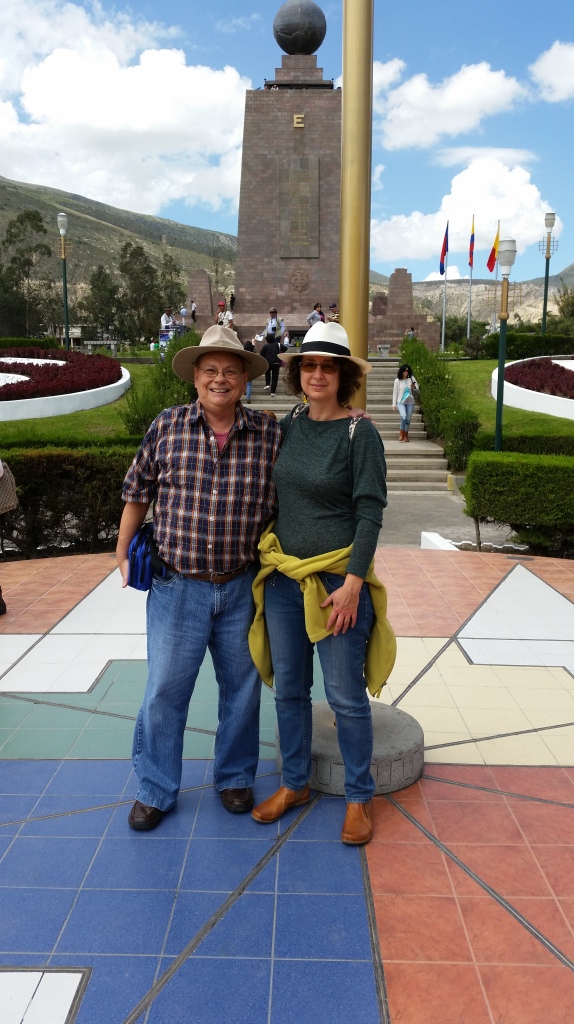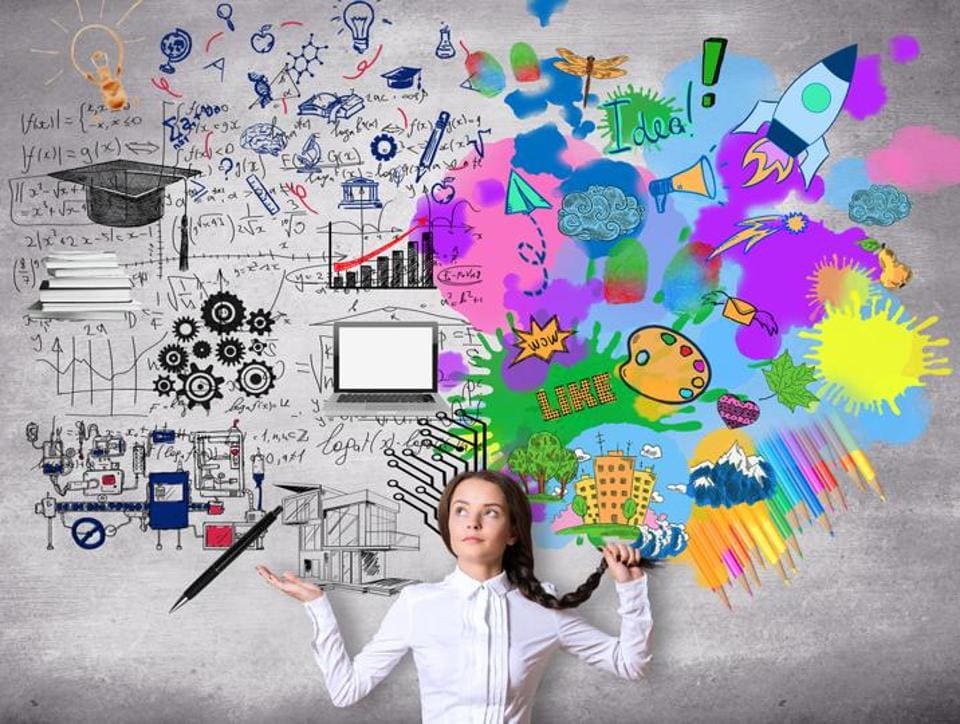Miriam Adelson was born in Israel. She attended the Hebrew Reali School for 12 years in Haifa. She served mandatory army service as a medical officer at Ness Ziona. After earning a Bachelor of Science in Microbiology and Genetics from the Hebrew University of Jerusalem, she earned a medical degree from Tel Aviv University School of Medicine.
Adelson became a physician and eventually the chief internist in an emergency room at Tel Aviv’s Rokach (Hadassah) Hospital. After divorcing her first husband, she joined Rockefeller University in 1986 as an associate physician specializing in drug addiction. While there she went on a blind date with a businessman -Sheldon Adelson. They later married in 1991. Her Husband passed in 2021 and Miriam inherited his businesses and estate. Miriam Adelson is today the majority owner of Las Vegas Sands casino and in the process of acquiring the Dallas Mavericks franchise from Mark Cuban. Forbes estimates her as the 42nd richest person in the world.
The point is – it all started with a blind date.
Looking for another interesting romantic story? Here we go.
Julia Flesher Koch met David Koch on a blind date in January 1991. In 1998, Koch told The New York Times that she didn’t immediately hit it off with him; but that she was glad she met him because she knew she wouldn’t want to go out with him again. However, the two met again at a party later that year and started dating. Julia Flesher Koch’s fortune comes from inheriting her late husband’s 42% stake in Koch Industries, a closely held industrial conglomerate. As of April 2023, Forbes ranked her second among the richest women in the world with a fortune of $59 billion. Not bad for a reluctant blind date.
Dude! Financial Serendipity is real!
You gotta be willing to go out and meet the unknown. Nothing is promised to us in life. Nothing is promised to them who stay home.
# # #
FINANCIAL SERENDIPITY
Financial Serendipity refers to the occurrence of unexpected beneficial events that lead to financial gain or improved financial well-being. These are basically random appearing “happy accidents” in the financial world that benefit us. The element of surprise and lack of intentional planning are key aspects of financial serendipity. The fortunate encounters are recognizable through personal sagacity.
So. You have to use your individual sagacity in order to encounter a serendipitous fortune.
Jerry Selbee of Evart MI had an undergraduate degree in Math and an MBA. Jerry owned a convenience store – the Corner Store in Evart. Among other merchandise sold in the store were Michigan lottery tickets. Some tickets were “winners” – winning tickets. Years later he explained: “People have been conditioned to think it is luck. They don’t look at the structure of games”.
In 2003 Jerry Selbee saw a brochure of a new Michigan lottery game. He read the T&C and realized that statistically a $1 lottery ticket was worth more than $1 on a certain week (known as “roll-down week”). He decided that if he buys a sufficient number of tickets to play, the law of probability will work favorably for him. It wasn’t the first time he purchased a ticket. Odds are odds. Odds are not a guarantee.
Jerry relied on his knowledge and wisdom – that was his sagacity.
Before the next lottery cycle he purchased 3,400 Winfall tickets for $3,400. After counting the winnings his tickets grossed $6,300. That’s a 46% profit margin. Next cycle he bought lottery tickets for $8,000 and grossed $15,700. (49% profit margin). Is that good? Yes? Or yes?
The rest is history. The full story was written and then scripted and made into the movie Jerry & Marge Go Large, released by Paramount, 2022. Jerry and Marge and their off-springs became millionaires. My point is – Jerry had the sagacity – knowledge in math and stats. With this knowledge he played the odds – purchased enough tickets (enough winning tickets to win lol) – and overcame the lottery odds. In other words was there “luck”? No. It was not coincidence. It was Engineered Serendipity! That’s what I call it.
Engineered Serendipity is the intentional design of environments or systems to escalate the likelihood of serendipitous encounters. It involves creating the conditions that foster unexpected connections and exploration. Brainstorming sessions are most used for serendipity encounters.
Hold it. I must read this last para again. To live by it!
Good Luck? What good luck?
Christian Bush says in his book, The Serendipity Mindset: “Good luck isn’t just chance – it can be learned and leveraged, and the serendipity mindset explains how you can use serendipity to make your life better at work and at home – everywhere.”
Invoking serendipity requires sagacity. Sagacity is the ability to think and act while using prior acquired knowledge and experience, there is hardly no serendipity without some sagacity.
There’s Engineered Serendipity in any Financial Serendipity.
# # #
SERENDIPITY IS SMART
Ethan Zuckerman, a director of the Center for Civic Media at MIT, defines engineered serendipity as the idea “…that we can help people come across unexpected but helpful connections at a better than random rate. And in some ways, it’s based on trying to reassess this notion of serendipitous as lucky — to think of serendipitous as smart.”
# # #
FINANCIAL SERENDIPITY IS THE LAW OF THE LAND
THE MAKING OF THE RICHEST MAN IN THE WORLD
At its height, in 1911, Standard Oil Co. was the largest petroleum company in the world, and its success made its co-founder and chairman – John D. Rockefeller – among the wealthiest Americans of all time. Rockefeller ran the company as chairman, until his retirement in 1897. Then he remained the major shareholder.
On May 15, 1911, the US Supreme Court upheld the lower court judgment and declared the Standard Oil group to be an “unreasonable” monopoly under the Sherman Antitrust Act, Section II. It ordered Standard Oil to break up into 34 independent companies with different boards of directors. The biggest two of the companies were Standard Oil of New Jersey (which became Exxon) and Standard Oil of New York (which became Mobil).
Standard’s president, John D. Rockefeller, owned a quarter of the shares of the resultant companies, and those shares’ values soon doubled in value. Standard Oil, before its breakup due to anti-monopolistic legal reasons was worth at least $1 trillion. Rockefeller emerged from the dissolution as the richest man in the world. The dissolution of Standard had propelled Rockefeller’s personal wealth.
By the time of his death in 1937, Rockefeller’s remaining fortune, largely tied up in permanent family trusts, – was estimated at $1.4 billion, while the total national GDP was $92 billion (1.5% of GDP). According to some methods of wealth calculation, Rockefeller’s net worth over the last decades of his life would easily place him as the wealthiest known person in recent history. As a percentage of the United States’ GDP, no other American fortune—including those of Bill Gates or Elon Musk —would even come close.
Get this – Rockefeller was serendipitously enriched in 1911, by political and legal actions outside himself, outside of his company, and against his choice.
Before I leave Rockefeller, here a the question: is Financial Serendipity the reason that causes the rich to get richer?
# # #
There are many other, unrelated historical examples that illustrate different ways financial serendipity played out:
Windfalls and Discoveries:
- The California Gold Rush (1848-1855): James Marshall’s accidental discovery of gold while building a sawmill sparked a massive migration and economic boom in California. James Wilson Marshall (1810 – 1885) was an American carpenter and a sawmill operator, who on January 24, 1848, reported the finding of gold at Coloma, California, a small settlement on the American River, about 36 miles northeast of Sacramento. His discovery was the impetus for the California Gold Rush. The mill property was owned by John Sutter who employed Marshall to build his mill. The wave of gold seekers turned everyone’s attention away from the mill which eventually fell into disrepair and was never used as intended. Neither Marshall nor Sutter ever profited from the gold find.
But this discovery sparked the California Gold Rush, transforming the state’s economy and creating immense wealth for miners, merchants, and even those who sold shovels and picks.
Unforeseen Market Shifts:
- The Dot-com Bubble (1995-2001): While many businesses during the dot-com boom went bust, early investors in internet companies like Google and Amazon reaped immense returns on their initial investments due to the unexpected and rapid growth of the internet.
- The COVID-19 Pandemic (2020-2023): While the pandemic caused widespread economic hardship, some industries like the big pharma industry, the online streaming services, e-commerce as Amazon, and software companies like Zoom experienced unexpected growth due to changes in consumer behavior during lockdowns. Early investors in these sectors benefited financially.
A Saga in Omaha
The Warren Buffett’s “Mistake” (1962). Warren Buffett is known as the “Sage of Omaha”.
Buffett’s purchase of Berkshire Hathaway (BH), initially intended to acquire an another undervalued company. It turned out to be one of his most successful investments as Berkshire diversified and grew beyond expectations.
Imagine buying a beat-up old car, thinking you could flip it for a quick buck. Turns out, the engine’s busted, and the whole thing’s barely hanging on. That’s kinda what happened to Warren Buffett with Berkshire Hathaway back in the day.
But here’s the twist: instead of ditching the junker, the ever-sagacious Buffett saw potential. He realized the car (or in this case, the BH company) had a cool frame and some decent parts. So, instead of selling it off, he started tinkering.
First, he ditched the busted engine (the failing textile business). Then, he used the car’s frame (BH) to build something new and awesome. He added all sorts of shiny upgrades: insurance companies, railroads, even candy companies!
Buffett figured out a neat trick with the insurance business. It basically generates a steady stream of cash, like having a built-in gas station for the car. This freed him up to focus on finding even more cool parts (businesses) to add to his collection.
By surrounding himself with smart people and letting them handle the day-to-day stuff, Buffett could focus on the big picture. He held onto his “upgraded” car for decades, letting it grow and compound like crazy.
In short, while buying Berkshire Hathaway was a bit of a stumble at first, Buffett’s willingness to adapt, his sagacious mind and eye saw an opportunity and turned HB into the ultimate investment success story. Who knew a “mistake” could become such a legendary ride?
Generational Shifts and Trends:
- The Rise of Social Media. The explosive growth of social media platforms like Facebook and Twitter created new avenues for advertising and marketing, spawning entire industries and generating considerable wealth for individuals involved in their early development.
We need to differentiate between expected yet random financial events and completely unexpected – Black Swan occurrences.
# # #
Financial Serendipity Requires Sagacity
Remember Warren Buffett the Sage of Omaha?
What is this sagacity?
Think of sagacity as being like your mental superpower. It’s that combo of sharp thinking, seeing things clearly, and making solid choices. You know, like the friend who always gives the best advice or the chess player who can predict your next move (but way cooler).
Serendipity Begets Serendipity.
Sagacity is about understanding stuff on a deeper level, not just the surface. You can sniff out good ideas from bad ones and spot trouble coming from a mile away, all while keeping your head cool and making smart decisions.
Basically, sagacity is what makes you a wise owl, not just a hoot. Carefully planned investments, sound financial management, and risk mitigation are crucial for long-term financial success. The key skill is to recognize the role of unexpected events and being prepared for them can sometimes help us take advantage of opportunities when they arise.
# # #
Bond. James Bond. & The Broccolis
Forget martinis for a sec drink, let’s talk about how the Broccolis got their hands on James Bond! It wasn’t just about throwing money around; it was a tale of smarts, guts, and a serious case of Bond-mania.
Picture this: 1959, Albert Cubby Broccoli stumbles upon Ian Fleming’s “Casino Royale” and thinks, “Whoa, this would be one heck of a movie!” He convinces his buddy Harry Saltzman to team up, but studios weren’t exactly lining up to fund a secret agent flick.
Here’s where the Broccolis get clever: They offer Saltzman a half-share of the film rights in exchange for scoring a studio deal.
Talk about a win-win!
They land Sean Connery to play Bond, seal a million-dollar deal with United Artists, and Baam – “Dr. No” is born, paving the way for future 007 adventures.
Fast forward to today: The Broccolis (no relation to the veggie, by the way) are still very much in the Bond business, with Cubby’s daughter Barbara and stepson Michael G. Wilson keeping the franchise going strong.
And let’s talk moolah: the Bond films have raked in an estimated revenue of over $7 BILLION worldwide! Not bad for a gamble on a secret agent with a taste for fast cars and shaken, not stirred, martinis.
So, there you have it! The Broccolis didn’t just buy the Bond rights. Cubby Broccoli stumbled unexpectedly upon the novel Casino Royale. Some will call this stumble – coincidence or luck but you and I know better that there is a reason behind the stumble. Broccoli was interested in Ian Fleming’s novels.
Cubby Broccoli gambled. Sometime in life you’ve got to gamble. If you don’t gamble you can’t win.
Now, if you’ll excuse me, I have a sudden urge to re-watch “Goldfinger”…
# # #
Financial Serendipity: A Black Swan Spawns Financial Opportunities
Financial Serendipity refers to the occurrence of unexpected positive events that significantly impact one’s financial situation. It’s the happy accident of the financial world, where a “random” stroke of “luck” leads to windfalls, opportunities, or breakthroughs. While not a dependable strategy, it’s a fascinating concept with real-life examples throughout history.
Dr. Morton Meyers wrote the book that reviewed serendipity in medical innovations up to 2011. Happy Accidents. Viagra was developed during experiments on medications designed to treat angina. Meyers has dozens of stories like this, in the areas of antibiotics, cancer treatments, cardiovascular therapy and antidepressants.
So what’s a Black Swan?
The black swan theory or theory of black swan events is a metaphor that describes an event that comes as a surprise, has a major effect, and is often inappropriately rationalized after the fact with the benefit of hindsight. The term is based on an ancient saying that presumed black swans did not exist, until they were discovered in Australia in 1697, and it then became reinterpreted to mean an unforeseen and consequential event.
The year 2020 was the Black Swan year of a sweeping global pandemic.
Pfizer and Moderna – Post-Modern Example of Financial Serendipity
The COVID-19 pandemic has had a significant impact on the financial performance of big pharma, Pfizer and Moderna. Both companies have seen their stock prices rise significantly since the beginning of the pandemic, and they have generated billions of dollars in revenue from the sale of their mRNA COVID-19 vaccines.
There are a number of factors that have contributed to the financial success of Pfizer and Moderna during the pandemic. One important factor is the high demand for COVID-19 vaccines. Governments around the world were willing to pay high prices for vaccines in order to protect their populations, and this has led to significant revenue for Pfizer and Moderna.
Another factor is the fact that Pfizer and Moderna were able to develop and manufacture their vaccines relatively quickly. This was due in part to the fact that they were able to leverage existing research on mRNA technology. As a result, they were able to get their vaccines to market ahead of many of their competitors, which gave them a first-mover advantage.
The government helps again. Just like in the case of Rockefeller’s Standard Oil. Pfizer and Moderna have been able to benefit from generous government funding for vaccine development and manufacturing. This funding has helped to reduce their costs and has also helped to mitigate the risks associated with developing new vaccines.
Overall, the COVID-19 pandemic has had a major impact on the financial performance of Pfizer and Moderna. Both companies have seen their stock prices rise significantly because of the generated billions of dollars in revenue from the sales of their COVID-19 vaccines.
Pfizer alone generated $35 billion net profits on its COVID-19 related products during 2021 and 2022. BioNTech and Moderna made $20 billion each, while Sinovac pocketed $15 billion.
Dr. Albert Bourla, the CEO of Pfizer net worth went up by $24 million in 2022.
Well, Albert Bourla is a sagacious man.
The financial success of Pfizer and Moderna during the pandemic has also been controversial, with many people arguing that the companies have been charging too much for their vaccines and have not done enough to make them available to people in low- and middle-income countries.
The Invention of Post-it Notes (1968). A classic story. Spencer Silver, a chemist at 3M Company, developed a weak adhesive that wouldn’t damage paper. Despite its initial lack of commercial success, Arthur Fry, a colleague, discovered its usefulness for marking pages in his hymnal. This “happy accident” led to the creation of Post-it Notes, a multi-billion-dollar product that continues to bring revenue to 3M.
The Rise of Google (1998). While searching for information on the web, Larry Page and Sergey Brin developed a new algorithm that ranked websites based on their relevance. This algorithm, originally called BackRub, became the foundation for Google search engine. It transformed the way we access information and is still generating immense wealth for its founders and early sagacious investors.
The GameStop Short Squeeze (2021). A group of retail investors on Reddit, spurred by online discussions, bought shares of GameStop, a struggling video game retailer, heavily shorted by hedge funds. This unexpected buying pressure caused the stock price to skyrocket, leading to massive losses for hedge funds and windfalls for some retail investors. This was another case of gambling – financial gambling – some won, others lost.
There are more examples of how unexpected events can have a profound impact on the financial world. While financial serendipity can be a powerful force, it’s important to remember that it’s not a reliable strategy. Building wealth through sound financial planning, hard work, and sagacious investment decisions is the most sustainable path to success.
# # #
JAMES MICHENER – THE SERENDIPITOUS AUTHOR
Financial Serendipity involves a combination of education, “chance” recognition, preparation, and sagacious appreciation when stumbling upon opportunity. Let’s look for a change in how wealth was made in the realms of authorship, book publishing, Broadway musicals and Hollywood production.
James Michener was an American author and historian. He wrote more than 40 books, many of which were long, fictional family sagas covering the lives of many generations, set geographic locales and incorporating detailed history.
Michener was born in 1907 in Pennsylvania. He later wrote that he did not know who his biological parents were, or exactly when or where he was born. He was raised as a Quaker by an adoptive mother, Mabel Michener.
Michener graduated from Doylestown High School. He attended Swarthmore College, where he played basketball and was a member of the Phi Delta Theta fraternity. After graduating in 1929, with a Bachelor of Arts degree in English and history, he traveled and studied at the University of St Andrews in the medieval town of St. Andrews, Scotland, on the coast of the North Sea, for two years. He traveled in Italy, Spain, Belgium, France, and Holland. According to the back dust cover of his first book !947 edition), For the first time he held papers as an able-bodied seaman in the British merchant navy and sailed in the Mediterranean touching the North Coast of Africa, Sicily and the Balearic Islands. He has lived in sixteen of the forty-eight States and traveled all the forty-nine States.
Michener talked about hoboing (riding freight trains for free) during the Great Depression, (mentioned in the 1998 Great Depression documentary on the History Channel).
Michener became a high school English teacher. Next, he attended the University of Northern Colorado, where he earned a Master of Arts degree in education. After graduation, he taught at the university.
Michener accepted a Guest Lecturer position at Harvard University, during 1939 to 1940. He left Harvard to work for Macmillan Company Publishers as their social studies education editor.
Michener enlisted in the United States Navy during World War II. He was fortunate to have opportunities travelling throughout the South Pacific Ocean on various Navy assignments which he gained because his base commanders mistakenly thought his father was an Admiral (Marc Mitscher – an odd phonetic similarity in names). His experiences during these travels inspired the stories published in his breakout work Tales of the South Pacific.
Let’s recap. Michener acquired a wide education. As a world traveler and hobo in America and Europe he sure gained unusual life experiences. He made his way to Harvard (not as a student). Michener began his writing career during WW II, when as a lieutenant in the U.S. Navy he was assigned to the South Pacific as a naval historian. By the end of WW II, he thoroughly lived and saw the South Pacific and its innumerable islands, the peoples, and their cultures.
He later turned his notes and impressions into Tales of the South Pacific (1947).
Cover photo of first edition 1947, owned by author.
The “Tales” was his first book, published when he was age 40. The book won the Pulitzer Prize for fiction in 1948.
Rodgers and Hammerstein adapted the Pulitzer winning book into the hit musical South Pacific, which premiered on Broadway, in New York City, in 1949. The musical was next adapted into a feature films in 1958 and 2001.
Get this – Michener led a life of consecutive events of imaginative inspiring serendipitous encounters.
He was curious to acquire an education. In between and subsequently his life was a series of adventures! One of his later books was titled The World is My Home.
He was a Sagacious man par excellence, all along. He seized life opportunities! Brilliant enough to be invited to teach at Harvard. Brilliant enough to ditch Harvard. No wonder that he saw in the Publishing House of McMillan Co a better opportunity than Harvard… So, when he wrote his fictional, a bit romantic, yet historical WW II memoir he had an established publisher in waiting.
Dude. When you have a ready powerful publisher, you end up awarded a Pulitzer Prize and get movie contracts from Hollywood studios.
Serendipity Begets Serendipity!
Not sure yet?
James Michener was riding the post-war wave. Fresh out of the Navy, Michener penned “Tales” while his memories were still vivid. This timeliness captured a realness that hooked readers. Think of it like catching a story wave just as it’s about to crest.
Right publisher, right time. Like finding the perfect board for the wave, Michener had the publisher who was hungry for war stories. Macmillan pushed the book hard, and Michener actively promoted it, making sure everyone knew about his ride.
From a book to Broadway. “Tales” wasn’t just a bestseller; it became a smash musical and movie. This wasn’t just catching a wave, it was like riding it all the way to Hawaii and back, first class! The success brought Michener even more recognition and moolah.
This is the front cover of my first edition cover. 1947
Formula for fortune. Michener learned from his first success. He went on to research diverse locations, wove history and fiction together, and kept the quality high. This consistency kept his readers hooked and the money flowing.
Michener created a new genre of sound history combined with storytelling. He was a writing machine, churning out quality novels that often got adapted for the screens. He wrote 40 novels. Some of them are almost a thousand pages long.
While specific events like the war and the musical were big boosts, his success was like a perfect storm: talent, hard work, smart choices, and a dash of serendipity. He wasn’t just catching waves; he was creating them! Sure, James Michener struck gold, but it wasn’t all blind luck. Imagine Michener as a surfer, catching the perfect wave of opportunity.
The serendipitous key moments that got him the ride all the way to the financial shore:
Joining the Navy. Not exactly winning the lottery, but this wasn’t random event in a life of a young man. Michener already craved adventure, and the Pacific during WWII gave him a front-row seat to unique cultures and experiences. This became the source of raw material for his first hit, like “Tales of the South Pacific.”
It is reported that Michener had a noteworthy net-worth of $80 to 120 million. Depends on the sources I looked at.
He passed in 1997 and is remembered as a great philanthropist.
The New York Times Book Review described him as: “Literary legend James A. Michener was a Renaissance man, adventurous, inquisitive, unpretentious and unassuming, with an encyclopedic mind and a generous heart”. When a man is that towering, then his net worth is towering too.
# # #
Glauco L Ortolano was born in Americana, Brazil (1959). He is a poet, a philosopher, and author in Portuguese an English. He taught in several universities in the Americas, Europe, and Asia. He considers himself an explorer of the human soul, and travels to seek understanding and enlightenment from other cultures.
Ortolano’s most famous quote is: “Serendipity is the faculty of finding things we did not know we were looking for.” He says that when we die, we will eventually understand the true meaning of this quote.
Financial Serendipity refers to the occurrence of unexpected profitable financial events or outcomes, often through unforeseen circumstances. It’s the so-called lucky break in the world of finance – the windfall that catches our sail and propels us forward.
Here are other historical examples, showcasing the diverse ways serendipity can play out:
Market Crashes Trigger Unexpected Fortunes:
- The 1929 Stock Market Crash: While devastating for many, the crash also presented opportunities. Bernard Baruch, a prominent financier, famously advised, “It’s time to start buying.” He used the panic to acquire undervalued stocks, laying the foundation for his immense wealth.
- The 2008 Financial Crisis: The crisis triggered a wave of bankruptcies, but also birthed companies like Uber and Airbnb, and pushed up Walmart, Home Depot and Amazon, which filled gaps left by struggling incumbents. Their founders, seizing the moment of disruption, built empires on the ashes of the financial meltdown.
Unexpected Discoveries and Innovation:
- Edwin Drake’s Oil Strike: In 1859, Drake was not searching for oil, he was searching for salt! His unsuccessful well, however, struck a much more valuable treasure – the first commercially viable oil well in the United States, sparking a boom and transforming industries.
Accidental Investments in Technology and Unexpected Windfalls.
NVIDIA
Imagine NVIDIA back in the 90s, just trying to sell fancy graphics cards for your game playing pc. Fast forward three decades later, and everyone’s going crazy about this new tech called Artificial Intelligence. Turns out, those fancy graphics cards were perfect for crunching the symbols and numbers most useful for this AI stuff. That is thanks to their special way of parallel processing – handling multiple tasks at once.
NVIDIA was founded on April 5, 1993, by Jensen Huang, Chris Malachowsky, and Curtis Priem, with a vision to bring 3D graphics to the gaming and multimedia markets.
The guys at NVIDIA saw an opportunity and said, “hold my beer” while they started making GPUs specifically designed for AI. They even created tools to make it easier for programmers to use these powerful cards for their AI projects. Partnering with big tech companies and researchers just boosted and scaled their success.
So, how’d this play out for NVIDIA financially?
Let’s just say their sales and stock price went up.
In simple terms, NVIDIA has been on a major roll.
Since going public in 1999, the company value has skyrocketed from just over half a billion dollars to a whopping $1.97 trillion as of today, February 26th, 2024. That’s a mind-blowing growth of over 345,000%!
Think about it this way: if you invested $1,000 in NVIDIA back in 1999, it would be worth roughly $3.5 million today. Now, that’s past performance, and future results are never guaranteed, but it sure gives you a sense of their journey.
They became the big name in the AI game, with their GPUs powering everything from self-driving cars to chatbots.
Now that we understand how NVIDIA is about to become the largest market capitalized company in America, let’s look at the potential of its contributions to AI and AI’s contributions to engineered financial serendipity.
Imagine finding a hidden gem of a stock or stumbling upon the perfect investment opportunity – that’s the kind of financial serendipity we’re talking about. And guess what? AI is like our secret financial wingman, helping us discover these happy surprises.
Here’s how AI gives our finances a serendipity boost:
Spotting hidden connections in the financial markets. AI is a data whiz, crunching processing through mountains of information to find hidden links between things. This means AI can unearth unexpected connections between financial products, market trends, and our own situation. Based on this, it can recommend personalized options we might have missed, opening doors to serendipitous finds.
AI may nudge us in the right direction. Think of AI as a friendly financial advisor, learning our habits and goals. It can then give us personalized nudges, suggesting things we might have overlooked that could lead to happy financial surprises. Recommending financial moves we may consider.
AI can keep us safe from pitfalls. AI acts like a watchful eye on your finances, analyzing data in real-time to sniff out potential risks. By avoiding bad decisions, AI indirectly creates space for unexpected financial opportunities to blossom.
AI gives us market hints. While it’s not a flat-out fortune teller… AI can analyze past data to predict future trends, giving insights that might lead to serendipitous investment decisions or uncovering hidden gems in the market.
In short, AI is a tool, and its effectiveness depends on the data it has and how it’s used. But one thing’s for sure, AI is now shaking things up in the financial world, making it more fertile ground for those happy financial surprises we all wish.
Financial Serendipity is a concept. It’s no way a guaranteed strategy. It highlights the importance of staying open to the avalanche of ever incoming new opportunities towards us. Being open-minded and adaptable is a must. Accepting with open arms the random occurrences play a role in our financial journey down Wall Street.
Financial Serendipity is a catalyst, it still crucially requires having a solid financial foundation, making informed decisions, and managing risks wisely. Chance encounters are useful for the prepared mind to capitalize on unexpected opportunities when they are encountered.
Engineered Guerrilla Financial Serendipity is a ubiquitous opportunity. Because serendipity begets serendipity. Because serendipity is in the perceptive mind.
# # #
Notes and Books:
Why do burglars rob the bank? Because that’s where the money is.
I know. I repeated my positions and statements more than once. That’s because you’re are reading my personal notes as I like them and you didn’t pay me royalties…
Random Walk Down Wall Street.
Deloitte Touche is a world-renowned audit, consulting, financial advisory, risk advisory, tax, and legal services with approximately 457,000 employees globally.
At Deloitte, John Hagel III was the founder and chairman of the Silicon Valley-based Deloitte Center for the Edge, focusing on identifying emerging business opportunities that are not yet on the CEO’s agenda.
The book Power of Pull shows how to apply its principles to unlock the hidden potential of individuals and organizations, and how to use it as a force for innovative social change and the development of creative talent.
John Hagel et al. explore how to use the power of “Pull” to enhance productivity of attention and thus enhance serendipity encounters. Access new sources of information; attract likeminded individuals from around the world; shape serendipity to increase the likelihood of positive chance encounters and form creative environments to drive you and your colleagues to new heights of achievement. Transforming our organizations to adapt to the incoming flow of knowledge.
The Serendipity Mindset by Christian Bush.
Happy Accidents. Serendipity in Modern Medical Breakthroughs. Morton A. Meyers M.D. Arcade Publishing, N.Y. 2011.
Jason Fagone: Jerry and Marge Go Large. Huffington Post. March 18, 2018
Inventology. How We Dream up Things That Change the World by Pagan Kennedy.
Sanda Erdelz researched and wrote about information explorations using the internet.
Mandy Lender, MD, MBA is the author of The Master Attractor and owner of the ATTRACTOME™ .
Mandy Lender and Minna Rozen own the rights to Lender Combinations: Baruch Lender and His Chess Problems.
Before I leave, here is an autographed photo dedicated to me, by the actor Richard Kiel (Jaws) as he was struggling and fighting 007 – Roger Moore.
I ran into Richard Kiel by serendipity.
www.mandylender.com www.mandylender.net www.lendercombinations.com www.attractome.com
© Mandy Lender 2024.
Tags: #engineeredfinancialserendipity #financialserendipity #NVIDIA #DeloitteTouche #WarrenBuffett #JamesMichener #AlbertBourla #Pfizer #Moderna #BerkshireHathaway #MiriamAdelson #JuliaKoch #JerrySelbee #JohnDRockefeller #StandardOil #DallasMaverick #MarkCuban #BlackSwan #JamesBond #AlbertBroccoli #SeanConnery #RichardKiel #RogerMoore #MichiganStateLottery #MinnaRozen













